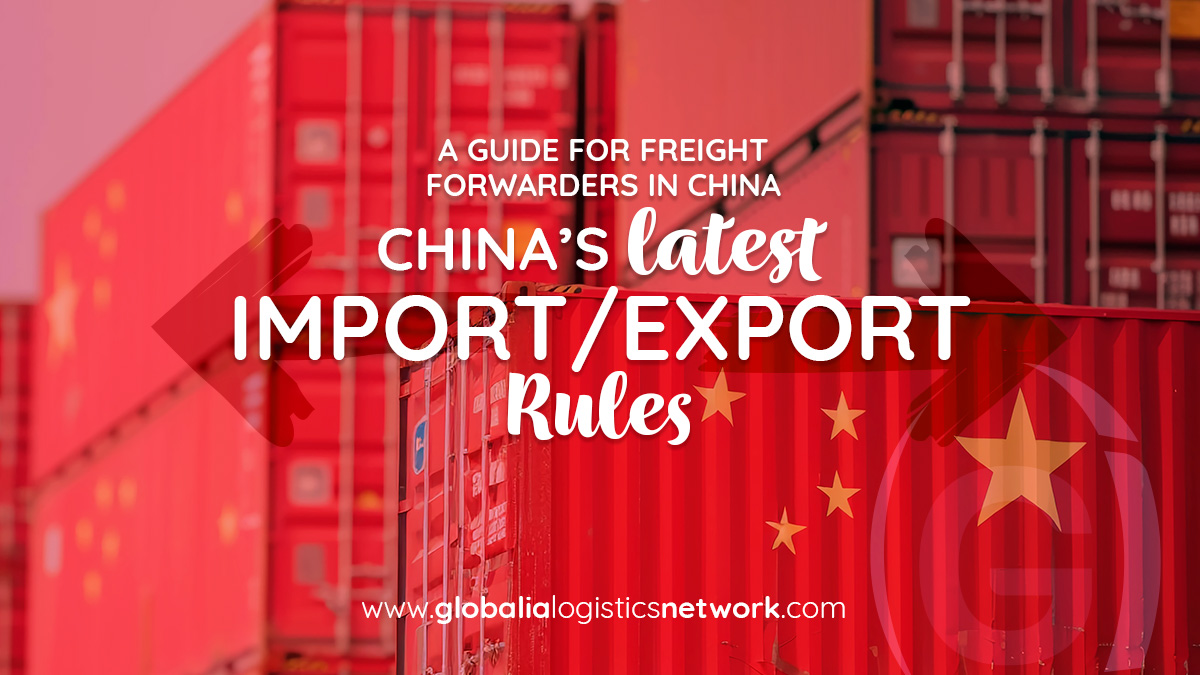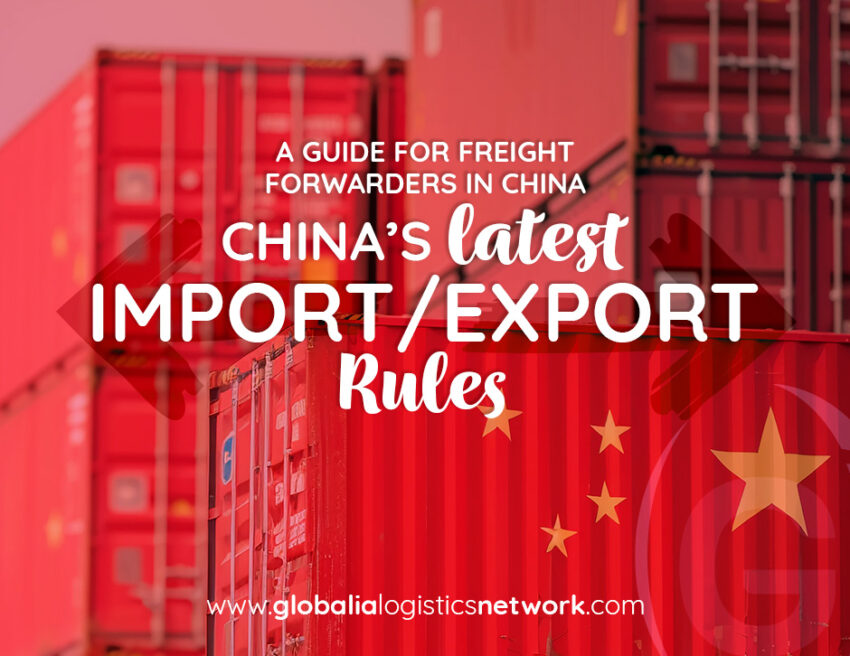In 2025, China’s trade environment is shifting rapidly, driven by updated regulations, shifting geopolitical dynamics, and the accelerating influence of technology. For logistics professionals operating in the country, staying informed and compliant has never been more essential. With China’s pivotal role in global supply chains, understanding the latest import/export policies is crucial for freight forwarders in China looking to remain competitive, avoid penalties, and provide reliable service to clients worldwide. This blog explores the most recent regulatory updates, their implications, and how freight forwarders in China can adapt and thrive amid this evolving landscape.

A new era of customs declarations and procedures
China has refined several key aspects of its customs procedures in 2025, creating both new opportunities and challenges for logistics providers. One of the most important updates is the revised timeline for customs declarations. Exporters are now required to submit preliminary customs declarations at least 24 hours before goods enter the customs supervision zone. However, a new system of pre-declaration allows submission up to seven days before entry, allowing more room for error checks and coordination.
Another significant addition is the “step-declaration” process. Under this new framework, exporters may submit a preliminary, simplified declaration with only essential shipment information. The full and final declaration must be completed within 14 days after the goods have physically entered the customs supervision zone. This staged approach aims to ease pressure during tight deadlines and allows for better data accuracy in customs processing.
While these measures increase flexibility, they also require freight forwarders in China to invest in more robust internal documentation systems and ensure coordination across departments. The margin for compliance errors has narrowed, and timeliness and accuracy in data submission have become core competencies.
Impact of the US-China trade war
As global trade tensions persist—particularly between China and the United States—the import/export environment continues to evolve unpredictably. In 2025, the U.S. government introduced sweeping tariff increases on Chinese goods, including electronics, industrial machinery, steel, and pharmaceuticals. Tariffs that previously hovered around 10% have now surged to as high as 60%, impacting hundreds of product categories.
In retaliation, China has imposed its own escalated tariffs on U.S. imports. The average duties now imposed by Chinese customs on affected American products reportedly exceed 140%. These reciprocal tariffs are forcing logistics companies to reconfigure supply chains and explore alternative markets or routes to minimize disruption and cost.
Freight forwarders in China must monitor these changes carefully and adjust routing, warehousing, and transportation strategies accordingly. It’s also critical for them to communicate proactively with clients, especially those heavily involved in U.S.-China trade lanes. This includes helping shippers identify potential cost impacts, advising on strategic shipment timing, and suggesting mitigation strategies such as alternative sourcing or transshipment options through lower-tariff countries.
Reinforced export controls on sensitive goods
In late 2024 and into 2025, China has tightened its export control laws, particularly for goods classified as “dual-use”—those that can serve both civilian and military purposes. This includes technology, chemicals, materials, and equipment used in aerospace, telecommunications, and semiconductor manufacturing.
Exporters of such items must now obtain licenses and provide end-use and end-user certificates before shipment. Moreover, exporters must prove due diligence in verifying that these goods will not be used for purposes that conflict with Chinese foreign policy or national security interests. These measures align China more closely with international non-proliferation frameworks while reinforcing its own security protocols.
For freight forwarders in China, these changes mean more than just new paperwork. There is now a significant compliance burden that requires familiarity with licensing processes, greater customer transparency, and risk assessment protocols. It also makes partnerships with vetted and trustworthy international clients more valuable, as the consequences of non-compliance can range from customs holds and penalties to full business license revocation.
Freight forwarders in China and the anti-foreign sanctions framework
In early 2025, China introduced a new layer to its trade compliance environment with the rollout of expanded anti-sanctions regulations. The new framework gives the Chinese government the authority to list foreign companies, individuals, or organizations that are found to be participating in discriminatory actions against China—either directly or indirectly. Sanctions imposed may include entry bans, asset freezes, transaction prohibitions, and restrictions on collaboration with Chinese firms.
For freight forwarders in China, these policies carry both legal and reputational risks. Logistical collaborations with blacklisted foreign entities could result in loss of business licenses or direct penalties. As a result, due diligence, transparency, and compliance checks in foreign partnerships must be more stringent than ever.
It’s crucial that freight forwarders in China work with legal advisors and compliance officers to maintain an updated registry of sanctioned entities, both from a Chinese and foreign perspective. The political nature of this regulation makes it dynamic, meaning that companies must be constantly on alert for additions or changes to the list.
Digitalization, green logistics, and the future of customs
2025 has also marked a significant leap forward in China’s customs digitization initiative. Freight forwarders are now expected to integrate with smart customs clearance platforms, powered by blockchain and AI. These systems offer predictive clearance timelines, automated risk assessments, and real-time cargo tracking. However, integration demands a digital infrastructure that smaller or mid-sized freight companies might still be developing.
Additionally, China is aligning its customs regulations with new environmental goals. As part of its broader decarbonization efforts, China now mandates detailed carbon footprint declarations for certain imported and exported goods. Exporters must submit digital documents outlining the environmental impact of the goods they’re shipping, especially in industries like textiles, automotive, and electronics.
Freight forwarders in China are now expected to educate their clients on new green compliance requirements and support the preparation of sustainability-related documentation. This represents a significant evolution in logistics from purely functional to environmentally accountable.
Training and workforce preparedness
Adapting to China’s evolving import/export rules also demands a well-trained workforce. With the frequent rollouts of updated compliance standards and digital customs interfaces, staff education must be continuous. Many freight forwarding companies are investing in in-house training programs or partnering with professional training providers that specialize in customs and trade compliance.
In 2025, China has also introduced certification programs for logistics professionals in collaboration with regional customs offices. These programs grant “trusted status” to certified firms and personnel, leading to faster clearances and reduced inspections. Forwarders with certified compliance officers may enjoy significant competitive advantages, particularly in high-volume or time-sensitive trade routes.
Conclusion: Readiness is the real competitive advantage
China’s latest import/export rules are setting a new standard for logistics excellence. From pre-declaration systems and green customs regulations to dual-use export controls and anti-sanctions laws, freight forwarders in China are operating in an environment where adaptation is non-negotiable.The freight forwarding businesses that thrive in 2025 and beyond will be those that prioritize compliance as a core competency. This includes making strategic technology investments, training staff, building compliant partnerships, and developing agility in the face of geopolitical shifts. For freight forwarders in China, the road ahead is more regulated, more digital, and more dynamic. But with the right tools and a commitment to staying informed, it’s also full of opportunity.


